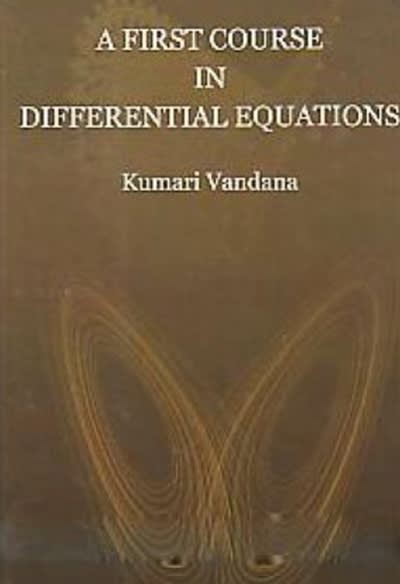Question
A. What is the likelihood that another conceived will in any case be alive at age 70. B. Assume An and B are two new
A. What is the likelihood that another conceived will in any case be alive at age 70.
B. Assume An and B are two new conceived male infants who are random to one another and their lives are autonomous of one another, what is the likelihood that both will be alive at age 70?
C. Assume An and B are two new conceived male children who are irrelevant to one another and their lives are autonomous of one another, what is the likelihood that both will be dead by age 70?
D. Assume An and B are two new conceived male infants who are disconnected to one another and their lives are autonomous of one another, what is the likelihood that at any rate An or B will get by to age 70?
Given data:
Age: 0 ; Number of survivors: 100,000
age: 70 ; Number of survivors: 69,875
Assume that 30% of all understudies who need to purchase a book for a specific course need another duplicate (the victories!), while the other 70% need a pre-owned duplicate. Consider haphazardly choosing 15 buyers.
(a) What is the likelihood that the number who need new duplicates is in excess of two standard deviations from the mean worth? (Round your response to three decimal spots.)
(b) The book shop has 10 new duplicates and 10 utilized duplicates in stock. In the event that 15 individuals come in individually to buy this content, what is the likelihood that every one of the 15 will get the kind of book they need from current stock? [Hint: Let X = the number who need another duplicate. For what estimations of X will every one of the 15 get what they want?] (Round your response to three decimal spots.)
(c) Suppose that new duplicates cost $150 and utilized duplicates cost $80. Accept the book shop as of now has 50 new duplicates and 50 utilized duplicates. What is the normal estimation of absolute income from the offer of the following 15 duplicates bought? [Hint: Let h(X) = the income when X of the 15 buyers need new duplicates. Express this as a straight function.]
Dr. Bird of prey works in a hypersensitivity center, and his patients have the accompanying sensitivities: 62 are oversensitive to dairy items, 91 are adversely affected by dust, 89 are susceptible to creature dander, 29 are hypersensitive to each of the three, 30 are unfavorably susceptible just to dust, 10 are unfavorably susceptible just to dairy items, 37 are oversensitive to dairy items and dust. (Round your responses to one decimal spot.)
(a) What percent of Dr. Falcon's patients are sensitive to creature dander?
%
(b) What percent of Dr. Falcon's patients are hypersensitive just to creature dander?
%
Think about the accompanying arbitrary example of width estimations (in inches) of 17 softballs:
4.89, 4.8, 4.8, 4.71, 4.86, 4.71, 4.76, 4.79, 4.85, 4.88, 4.74, 4.83, 4.75, 4.9, 4.77, 4.87, 4.89
In the event that we expect that the width estimations are ordinarily appropriated, track down a 99% certainty span for the mean distance across of a softball.
Convey the transitional calculations to at any rate three decimal spots. Round the responses to two decimal spots.
What is the lower furthest reaches of the certainty stretch? _______
What is the maximum furthest reaches of the certainty stretch? _______
Step by Step Solution
There are 3 Steps involved in it
Step: 1

Get Instant Access to Expert-Tailored Solutions
See step-by-step solutions with expert insights and AI powered tools for academic success
Step: 2

Step: 3

Ace Your Homework with AI
Get the answers you need in no time with our AI-driven, step-by-step assistance
Get Started


